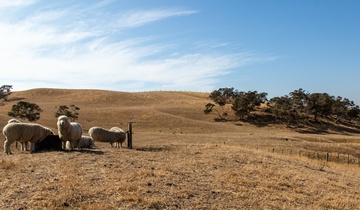In comparison with regions exposed to the west, Gisborne experiences a greater number of weather and climatic extremes.
Its position as the easternmost region of New Zealand often results in differing weather conditions from those elsewhere, in that synoptic features over the ocean to the east of New Zealand sometimes affect Gisborne alone among New Zealand regions.
The climate is generally congenial with a large number of sunshine hours per year and a low mean wind speed. However rainfall is unevenly distributed throughout the year with a prominent winter maximum. The shortage of spring rainfall often affects growth and limits some types of agricultural activity. The climate has been found to be generally suitable for sheep, beef cattle, viticulture, and forestry, and there are smaller areas of high productivity of fruit, vegetables, and dairy produce.
Read the report
Read the full report - The climate and weather of the Gisborne district - 2nd edition [PDF 4.5MB]
Suggested citation
Chappell, P.R. 2016. The climate and weather of Gisborne. NIWA Science and Technology Series 70, 40 pp.
NIWA's climatologies
A regional climatology is a summary of the typical weather and climate of a region, based on historical data observations made at climate stations located within the region.
| Attachment | Size |
|---|---|
| 6.51 MB |




